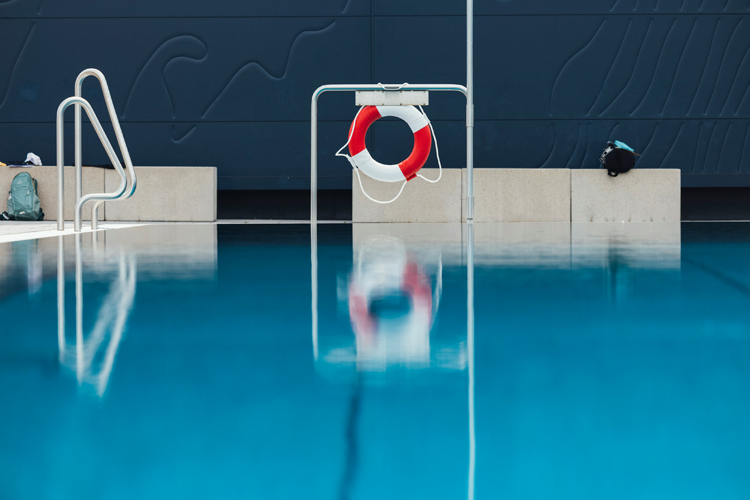
The older a surfer gets, the harder it is to stay fit to tackle more challenging and prolonged surf sessions. Here’s what swimming taught me.
The words are from Jarvis Cocker, the frontman of the legendary British band Pulp.
Help the aged
one time they were just like you.
Help the aged
’cause one day you’ll be older too.
It’s really inevitable, and it doesn’t happen only to others. Aging does take its toll on surfers, too.
Let me share a few personal insights with you.
I was blessed with an above-average metabolism, and my weight is one of the steadiest I know among friends and family.
It’s true that I also work for it. But I do not have to make many concessions to my diet and food and drink pleasures.
I follow a classic Mediterranean diet, with less meat and more fish, many salads with a lot of olive oil, mozzarella, fruits, and, obviously, bread and butter.
I very rarely drink soft drinks – maybe a Coke with a lemon and ice ten times a year – and my alcohol intake might be reduced to a couple of beers a week. I don’t like wine.
I also drink around 1.5 liters of water a day.
I don’t have cooking oil at home, and when I fry an egg, I just take advantage of the non-stick pan.
Another thing that is relevant to mention is that I only occasionally eat sweets. I enjoy a good 75-percent-plus chocolate or a quality ice cream, and that’s mostly it.
Espressos – two per day, religiously, after breakfast and lunch.
I also try to walk at least 15 minutes after the 1 pm meal to help with digestion.
These days, surfing on weekdays is virtually impossible, as the workload leaves no time for the fun I had in the good old days.
Hence, my weight rarely increases more than 3-5 percent, and if it does, it is more likely to occur during winter (December-March).

Improvements in Paddling and Stamina
I am a European adult in my late 40s.
I remember clearly noticing my peak physical prowess at around 36 years of age. I was surfing well and able to take on winter swells quite well.
When I turned 40, I noticed that it got harder to keep up with my fitness levels, especially paddling and stamina.
In other words, duck diving bigger waves and getting back to the lineup several times in a session would drain my energy fast.
I thought it was part of the process of aging. Today, I still think it is.
Nevertheless, in my mid-40s, I got back to swimming, and I was happily surprised by the impact it had on me as a surfer.
I have never been a gym guy.
I don’t appreciate the environment, and I am not a fan of bodybuilding and its culture. Nothing against it – it’s just not my thing.
So, when I got back to swimming, I quickly noticed it could help me regain a bit of my paddling consistency and endurance.
Because I swam more during spring, summer, and autumn, I was able to surf better in these periods.
When I swam less in winter, my performance decreased sharply. I should not be surprised, though. It’s been studied, and it’s in the books.
Swimming could probably be the best workout routine for surfers of all ages.
We at SurferToday.com have published a few interesting features on the topic of swimming and surfing, including one all-around surfer’s guide to swimming and another on a few pool exercises designed to improve wave-riding performance.
Duke Kahanamoku, the father of modern surfing, was a prolific Olympic swimmer, with both sports positively influencing each other.

Swimming for Surfing: An Array of Virtuous Advantages
But why is regular swimming an outstanding cross-training workout for surfers?
Here are six very valid reasons.
Boosts Cardiovascular Endurance
Swimming is a powerful aerobic exercise that increases maximal oxygen uptake (VO2 max) and overall cardiovascular fitness.
A systematic overview of swimming as a sport notes that just two-and-a-half hours per week in the pool can significantly lower the risk of chronic disease and improve circulation and stamina.
As we’ve seen above, this is particularly relevant for older surfers wanting to spend more time in the water and be able to get back to the lineup several times after each ride.
Develops Upper-Body and Core Strength
The resistance of water works against every stroke, effectively engaging the latissimus dorsi, deltoids, triceps, and rotational core muscles.
Surfers are essentially strong swimmers whose paddling performance hinges on upper-body endurance and trunk stability.
Regular swim training translates directly into more powerful, sustained paddling, something that riders in their late 30s, 40s, and 50s struggle to maintain for longer periods.
Enhances Respiratory Function & Breath Control
Another important upside is that controlled breathing patterns in swimming improve lung capacity, strengthen the diaphragm, and increase CO2 tolerance, which is critical for performing duck dives or recovering from more or less intense wipeouts.
Studies show that swimmers develop more efficient ventilatory patterns and greater tidal volumes.
Consequently, a surfer who also swims is more likely to stay calm and oxygenate quickly when submerged.

Improves Muscle Balance and Flexibility
Swimming requires symmetrical, bilateral strokes that counteract the one-sided demands of wave-face surfing.
For instance, if you’re on a right-hand wave day/week/month, you may be turning way more on the same rail for a while.
Reinforcing both sides of the body equally – and through the full range of motion in shoulders, hips, and spine – helps correct muscular imbalances and enhances joint flexibility.
As a result, your carves will feel smoother, and injury risks will be reduced.
Provides Low-Impact, Injury-Preventing Cross-Training
Buoyancy in water reduces compressive and shear forces on joints and the spine and allows surfers to train hard without the wear and tear of land-based workouts.
And this makes all the difference compared to a gym.
So, this low-impact environment helps prevent overuse injuries (for instance, shoulder impingements and lower-back strain) while still delivering a full-body stimulus.
Cultivates Mental Resilience and the”Blue Mind” Effect
Immersion in open water has been shown to lower stress hormones, improve mood, and foster a meditative state often dubbed the “blue mind.”
Also, research into wild-water swimming finds that natural aquatic environments promote mental restoration, resilience to stressors, and greater focus.
They are all essential qualities for reading waves, timing take-offs, and handling whatever unpredictabilities the ocean has for us.
Ultimately, have you noticed how many pro surfers’ bodies resemble those of swimmers? Give it a try. You’ll be amazed by the quick results, and they will translate into your surfing life.
Words by Luís MP | Founder of SurferToday.com


Leave a Reply